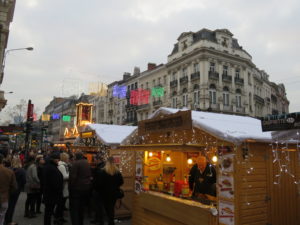 Nothing gets you in the holiday spirit faster than walking through a European Christmas market. That’s just a fact. The Europeans have been doing this for a long, long time, in some cases for over 700 years. The traditions run deep, and every market seems to have the just the right mix of food, fun and festivities. Some are small, some are huge, but they all seem to have more in common than not. The smell of bratwursts, roasting nuts and, of course, glühwein (a warm, spiced wine drink) is everywhere, spirits are high and everyone seems to be having a good time, despite the cold. Germany probably is the leader, with almost every town, large or small, hosting a market, but you can find markets in many other countries, even Romania.
Nothing gets you in the holiday spirit faster than walking through a European Christmas market. That’s just a fact. The Europeans have been doing this for a long, long time, in some cases for over 700 years. The traditions run deep, and every market seems to have the just the right mix of food, fun and festivities. Some are small, some are huge, but they all seem to have more in common than not. The smell of bratwursts, roasting nuts and, of course, glühwein (a warm, spiced wine drink) is everywhere, spirits are high and everyone seems to be having a good time, despite the cold. Germany probably is the leader, with almost every town, large or small, hosting a market, but you can find markets in many other countries, even Romania.
Cologne, Germany
The amazing two-spired Cologne Cathedral (pictured above) is the most visited landmark in all of Germany, and for good reason. The massive cathedral is beautiful, awe-inspiring and located steps away from the central train station, making it the first landmark many visitors see when arriving in Cologne. It also makes a perfect backdrop for the Weihnachtsmarkt am Dom (the Cathedral Christmas Market). While Cologne is large enough to feature several markets, it is hard to top the atmosphere surrounding the cathedral. The market also features a wider variety of foods than other markets. Best of all, you can easily visit the market even if you only have a short amount of time if you travel by train. Hop off the train and in less than 5 minutes, you can be sipping glühwein and shopping for ornaments.
Brussels, Belgium
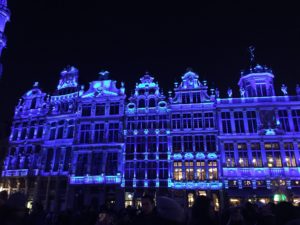 While Brussels may not have the charm of some of the other cities on the list, it does have some beautiful architecture and a few tricks up its sleeve. The Christmas market is large, spread through the streets and plazas of the city center. One end is anchored by The View, a huge ferris wheel, which makes a very cool backdrop. The other end is anchored by the Grote Markt, or Grand Place, which serves as the main “town square”. The plaza itself is actually empty except for a large Christmas tree. The real attraction here is the light show that takes place on the surrounding buildings. Synchronized to music, the show lasts almost 15 minutes and is a very impressive display. If that’s not enough, there is also an 3D-projection display on Saint Catherine’s Cathedral.
While Brussels may not have the charm of some of the other cities on the list, it does have some beautiful architecture and a few tricks up its sleeve. The Christmas market is large, spread through the streets and plazas of the city center. One end is anchored by The View, a huge ferris wheel, which makes a very cool backdrop. The other end is anchored by the Grote Markt, or Grand Place, which serves as the main “town square”. The plaza itself is actually empty except for a large Christmas tree. The real attraction here is the light show that takes place on the surrounding buildings. Synchronized to music, the show lasts almost 15 minutes and is a very impressive display. If that’s not enough, there is also an 3D-projection display on Saint Catherine’s Cathedral.
Rothenburg ob der Tauber, Germany
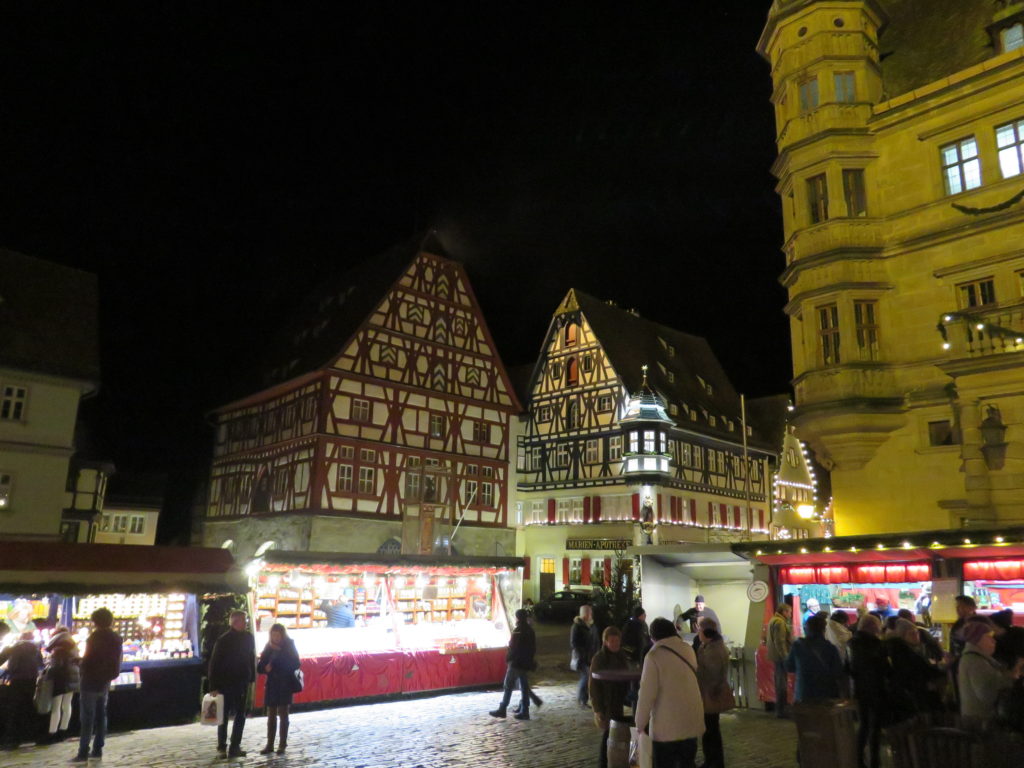 Germany will appear several times on this list, and for good reason: they invented them. The first Christmas markets anywhere in the world were held during the Middle Ages in Germanic-speaking Europe. One of the oldest markets is the one in Rothenburg ob der Tauber, a small, medieval village on the Romantic Road that is almost perfectly preserved. Largely spared from WWII bombing raids, the city center inside the old walls is a perfect replica of a German village from the 14th century. Except, it isn’t a replica, it is the real deal. As such, it is a perfect place for an authentic Christmas market. While it is much smaller than some of its more famous German counterparts, the Rothenburg market more than makes up for it in tradition and an abundance of charm.
Germany will appear several times on this list, and for good reason: they invented them. The first Christmas markets anywhere in the world were held during the Middle Ages in Germanic-speaking Europe. One of the oldest markets is the one in Rothenburg ob der Tauber, a small, medieval village on the Romantic Road that is almost perfectly preserved. Largely spared from WWII bombing raids, the city center inside the old walls is a perfect replica of a German village from the 14th century. Except, it isn’t a replica, it is the real deal. As such, it is a perfect place for an authentic Christmas market. While it is much smaller than some of its more famous German counterparts, the Rothenburg market more than makes up for it in tradition and an abundance of charm.
Sibiu, Romania
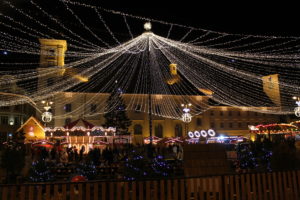 Another small, but incredibly charming, Christmas market can be found in an unlikely location, far away from Germany and the Alps. Sibiu, Romania, doesn’t have tradition going for it, as the market only started in 2007 as the first market in the country. But citizens and visitors alike have embraced the market, which has more the doubled in size since its inception. Most of the market stalls will be familiar to anyone who has visited another market in Europe, but there are a few exceptions. Probably the biggest difference (and the one to watch out for) is the availability of the traditional Romanian drink, țuică. Significantly stronger than mulled wine, the plum liquor can be over 50% alcohol, and drinking it is like drinking plum juice that is on fire. You have been warned.
Another small, but incredibly charming, Christmas market can be found in an unlikely location, far away from Germany and the Alps. Sibiu, Romania, doesn’t have tradition going for it, as the market only started in 2007 as the first market in the country. But citizens and visitors alike have embraced the market, which has more the doubled in size since its inception. Most of the market stalls will be familiar to anyone who has visited another market in Europe, but there are a few exceptions. Probably the biggest difference (and the one to watch out for) is the availability of the traditional Romanian drink, țuică. Significantly stronger than mulled wine, the plum liquor can be over 50% alcohol, and drinking it is like drinking plum juice that is on fire. You have been warned.
Nördlingen, Germany
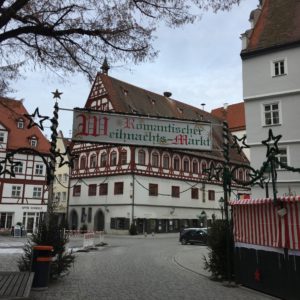 Nördlingen is an interesting place to visit for a few reasons, but the main one is to get off the most touristed paths for a bit. Not that tourists don’t visit Nördlingen; it is on the Romantic Road, after all. But it doesn’t have the throngs of tour buses that you’ll find in Rothenburg. And while it isn’t perfectly preserved due to damages suffered in the war, Nördlingen is still full of old-world charm, with an intact city wall surrounding an inviting Old Town. It even served as the landscape that Charlie flew over in the Great Glass elevator in the filmed version of the book. You can climb to the top of the steeple (named the “Daniel”) of Saint George’s church to get roughly the same view over the red rooftops. Interesting side note: Nördlingen sits inside the crater of a meteor, the Nördlinger Ries, and as a result, many of the buildings are built with stone that contains millions of tiny diamonds created during the impact. Science!
Nördlingen is an interesting place to visit for a few reasons, but the main one is to get off the most touristed paths for a bit. Not that tourists don’t visit Nördlingen; it is on the Romantic Road, after all. But it doesn’t have the throngs of tour buses that you’ll find in Rothenburg. And while it isn’t perfectly preserved due to damages suffered in the war, Nördlingen is still full of old-world charm, with an intact city wall surrounding an inviting Old Town. It even served as the landscape that Charlie flew over in the Great Glass elevator in the filmed version of the book. You can climb to the top of the steeple (named the “Daniel”) of Saint George’s church to get roughly the same view over the red rooftops. Interesting side note: Nördlingen sits inside the crater of a meteor, the Nördlinger Ries, and as a result, many of the buildings are built with stone that contains millions of tiny diamonds created during the impact. Science!
Nuremberg, Germany
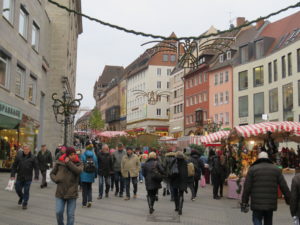 One of the largest and most-visited Christmas markets in Europe, Nuremberg is an excellent choice to visit as the stalls offer everything you would expect from a market, with excellent backdrops such as the Frauenkirche Nürnberg and Nuremberg Castle. The stalls stretch throughout the city center, with one section dedicated to international stalls from all over the world. Like other larger markets, Nurmeberg offers more variety, especially in terms of food options, and of course many, many places to find the ubiquitous glühwein. Another added attraction in the market is the Schöner Brunnen, a 14th-century fountain that is decorated for the season. Plus, if you spin one of the brass rings embedded in the fence surrounding the fountain, you are guaranteed good luck.
One of the largest and most-visited Christmas markets in Europe, Nuremberg is an excellent choice to visit as the stalls offer everything you would expect from a market, with excellent backdrops such as the Frauenkirche Nürnberg and Nuremberg Castle. The stalls stretch throughout the city center, with one section dedicated to international stalls from all over the world. Like other larger markets, Nurmeberg offers more variety, especially in terms of food options, and of course many, many places to find the ubiquitous glühwein. Another added attraction in the market is the Schöner Brunnen, a 14th-century fountain that is decorated for the season. Plus, if you spin one of the brass rings embedded in the fence surrounding the fountain, you are guaranteed good luck.
Bruges, Belgium
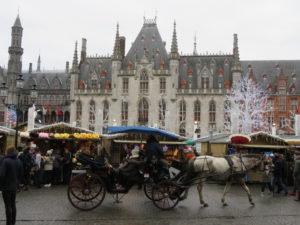 Unlike the large, big city feel of Brussels, Bruges has much more of a small-town, village atmosphere. It’s well-preserved medieval city center is a laid-back, charming place to walk around and explore. In addition to dozens of small restaurants, cafes and chocolatiers, Bruges is also home to a small Christmas market. Probably one of the smallest markets in Europe, the market itself really isn’t the main attraction in Bruges, but the surroundings make it an excellent place to have a true Belgian waffle drizzled with the best chocolate you will ever eat.
Unlike the large, big city feel of Brussels, Bruges has much more of a small-town, village atmosphere. It’s well-preserved medieval city center is a laid-back, charming place to walk around and explore. In addition to dozens of small restaurants, cafes and chocolatiers, Bruges is also home to a small Christmas market. Probably one of the smallest markets in Europe, the market itself really isn’t the main attraction in Bruges, but the surroundings make it an excellent place to have a true Belgian waffle drizzled with the best chocolate you will ever eat.
Ulm, Germany
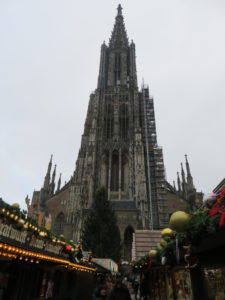 Ulm is another place where the Christmas market isn’t really the main attraction. In this case, anything that happens in Ulm will have to compete with the star of the show, the 530-foot tall Ulm Minster (aka Ulm Cathedral, even though it technically isn’t a cathedral). The massive gothic spire of the world’s tallest church dominates the skyline for miles around, and it is an awe-inspiring place to visit. It is also an excellent backdrop for an excellent Christmas market, a small, compact collection of stalls selling food and handmade goods. A nice addition for kids is a small railroad that runs through dioramas of famous children’s fairy tales. You’ll also notice a plethora of signs imploring men to use the restrooms instead of urinating on or around the church, which were put up when it was discovered that urination was eroding the sandstone foundations of Ulm Minster, threatening its structural integrity.
Ulm is another place where the Christmas market isn’t really the main attraction. In this case, anything that happens in Ulm will have to compete with the star of the show, the 530-foot tall Ulm Minster (aka Ulm Cathedral, even though it technically isn’t a cathedral). The massive gothic spire of the world’s tallest church dominates the skyline for miles around, and it is an awe-inspiring place to visit. It is also an excellent backdrop for an excellent Christmas market, a small, compact collection of stalls selling food and handmade goods. A nice addition for kids is a small railroad that runs through dioramas of famous children’s fairy tales. You’ll also notice a plethora of signs imploring men to use the restrooms instead of urinating on or around the church, which were put up when it was discovered that urination was eroding the sandstone foundations of Ulm Minster, threatening its structural integrity.
Zürich, Switzerland
Switzerland shares a border and a language with Germany, so it is no surprise that they share traditions, as well. In Zürich, the plaza in front of the Opernhaus Zürich (Zurich Opera House) is turned into a lovely Christmas market, complete with carousel for the children. Like everything in Switzerland, the goods for sale are expensive, but there are a lot of quality items available, along with a more diverse selection of food than you usually see at a market. If you are lucky enough to catch a clear evening (and remember, this is December, so by evening, we’re talking about 4:30pm), you can cross the street and watch the sun set on the distant peaks of the Alps, reflected by Lake Zurich in the foreground. And that won’t cost you a dime, so not too shabby.
Innsbruck, Austria
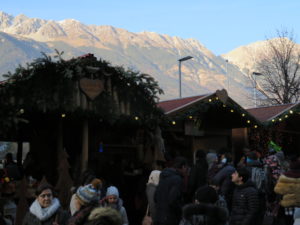 Like Switzerland, Austria has a historical connection to Germany and its traditions. The markets in the two countries are very similar, but Innsbruck definitely stands out due to its natural setting. Located in a broad valley on the Inns River, and surrounded by peaks thousands of feet tall that rise right from the edge of the city, Innsbruck is a natural winter wonderland. In every direction, impressive snowcapped peaks act as backdrops for colorful rows of houses, church steeples and in December, the lights of the Christmas market. Throughout the streets of the Altstadt (Old Town) and along the Inns River near the Innanna Bridge, dozens of stalls sell everything you would expect to find at a Christmas market. With possibly the most picturesque setting of any market in Europe, you’ll want to bring your camera and your wallet for this one.
Like Switzerland, Austria has a historical connection to Germany and its traditions. The markets in the two countries are very similar, but Innsbruck definitely stands out due to its natural setting. Located in a broad valley on the Inns River, and surrounded by peaks thousands of feet tall that rise right from the edge of the city, Innsbruck is a natural winter wonderland. In every direction, impressive snowcapped peaks act as backdrops for colorful rows of houses, church steeples and in December, the lights of the Christmas market. Throughout the streets of the Altstadt (Old Town) and along the Inns River near the Innanna Bridge, dozens of stalls sell everything you would expect to find at a Christmas market. With possibly the most picturesque setting of any market in Europe, you’ll want to bring your camera and your wallet for this one.
Munich, Germany
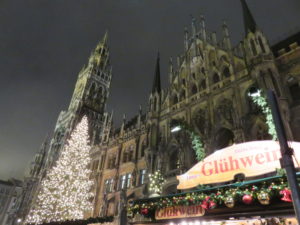 As one of the largest cities in Germany, it is no surprise that Munich is filled with Christmas markets. Probably the most popular, centered on Marienplatz in the Old Town, contains dozens of stalls that stretch into the surrounding side streets. The area is also a major shopping destination, so there are plenty of traditional retail shops to duck into along with all the that the market has to offer. Not far from the area, located on the same fairgrounds that host the famous Oktoberfest, the Tollwood Winter Festival is a slightly more corporate-feeling Christmas market. Besides the numerous outdoor stalls, huge tents allow you to shop or grab a bite to eat in warmth, which is a nice change of pace if you’ve been out in the cold for a few hours.
As one of the largest cities in Germany, it is no surprise that Munich is filled with Christmas markets. Probably the most popular, centered on Marienplatz in the Old Town, contains dozens of stalls that stretch into the surrounding side streets. The area is also a major shopping destination, so there are plenty of traditional retail shops to duck into along with all the that the market has to offer. Not far from the area, located on the same fairgrounds that host the famous Oktoberfest, the Tollwood Winter Festival is a slightly more corporate-feeling Christmas market. Besides the numerous outdoor stalls, huge tents allow you to shop or grab a bite to eat in warmth, which is a nice change of pace if you’ve been out in the cold for a few hours.

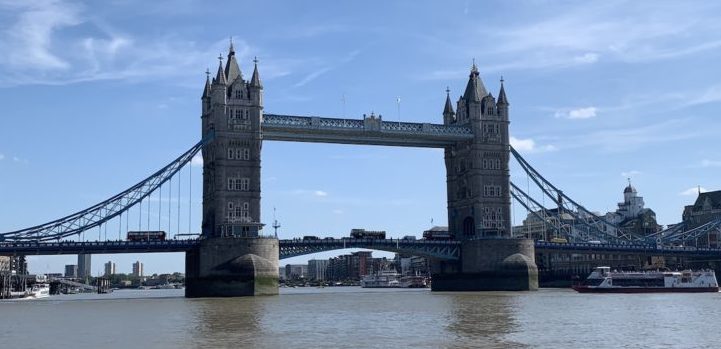
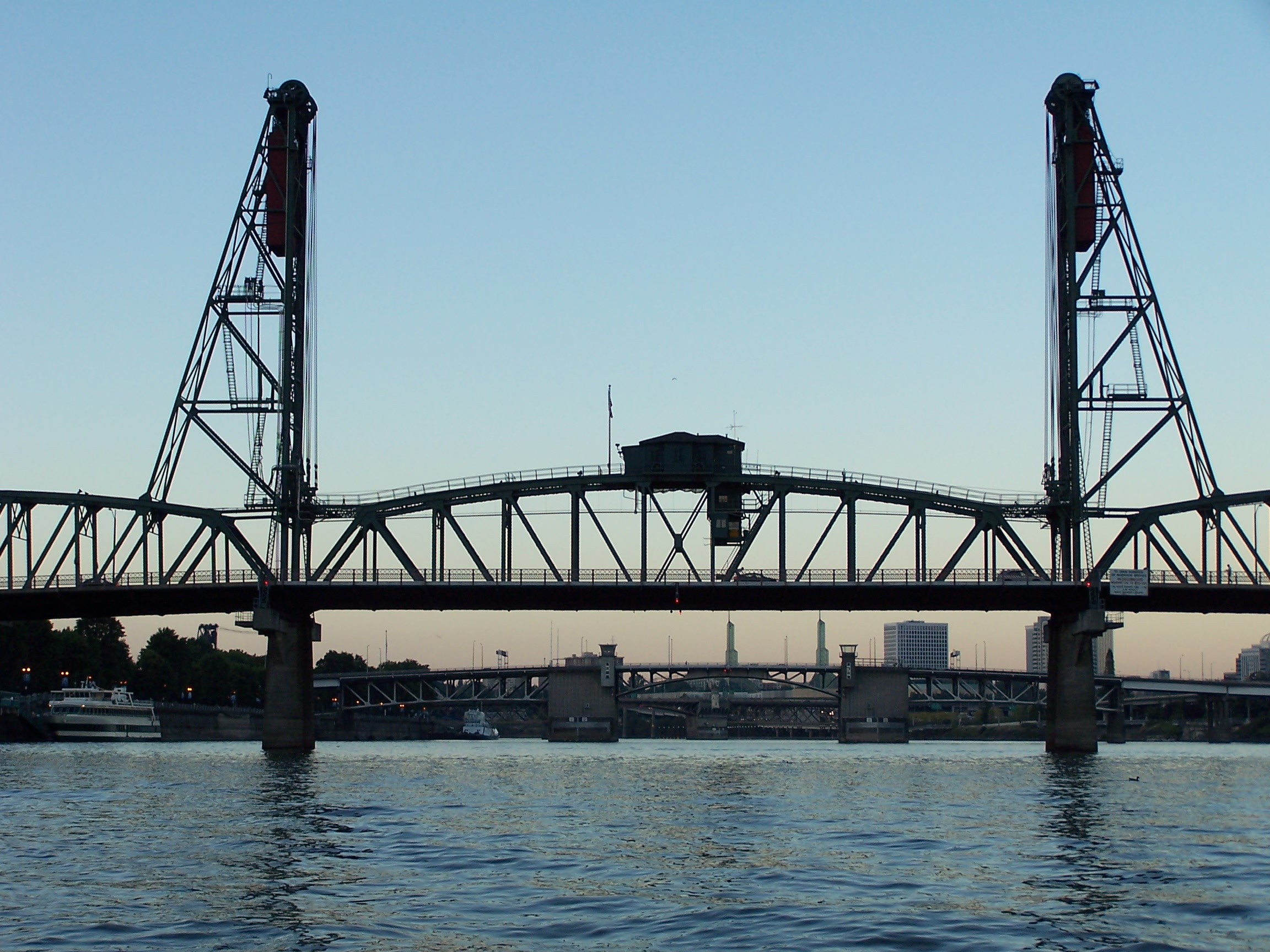
Wow! What a wonderful overview of the many Christmas markets. Your descriptions create an urge to book a trip right now! Thanks for sharing in such a clear, interesting manner .